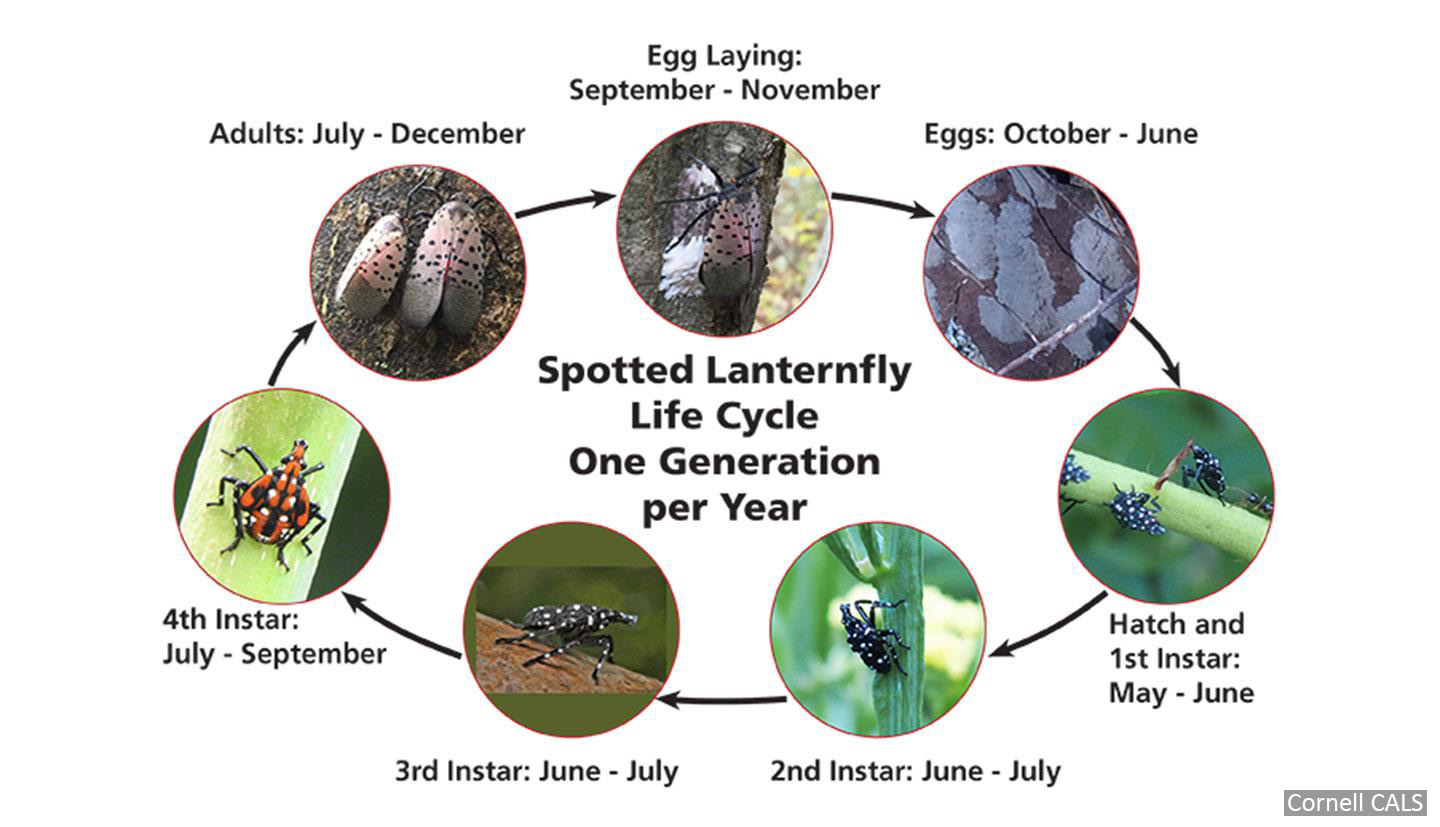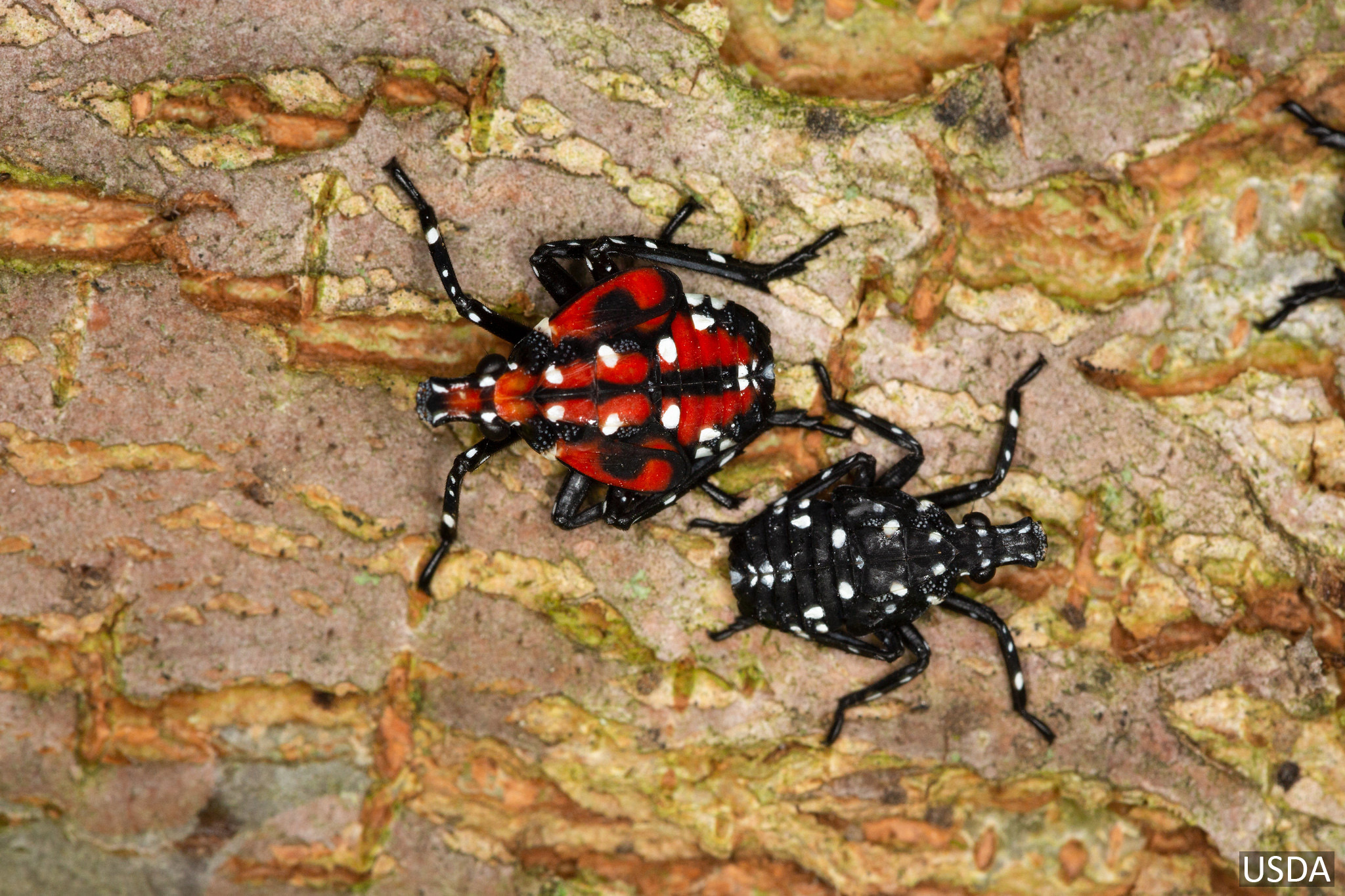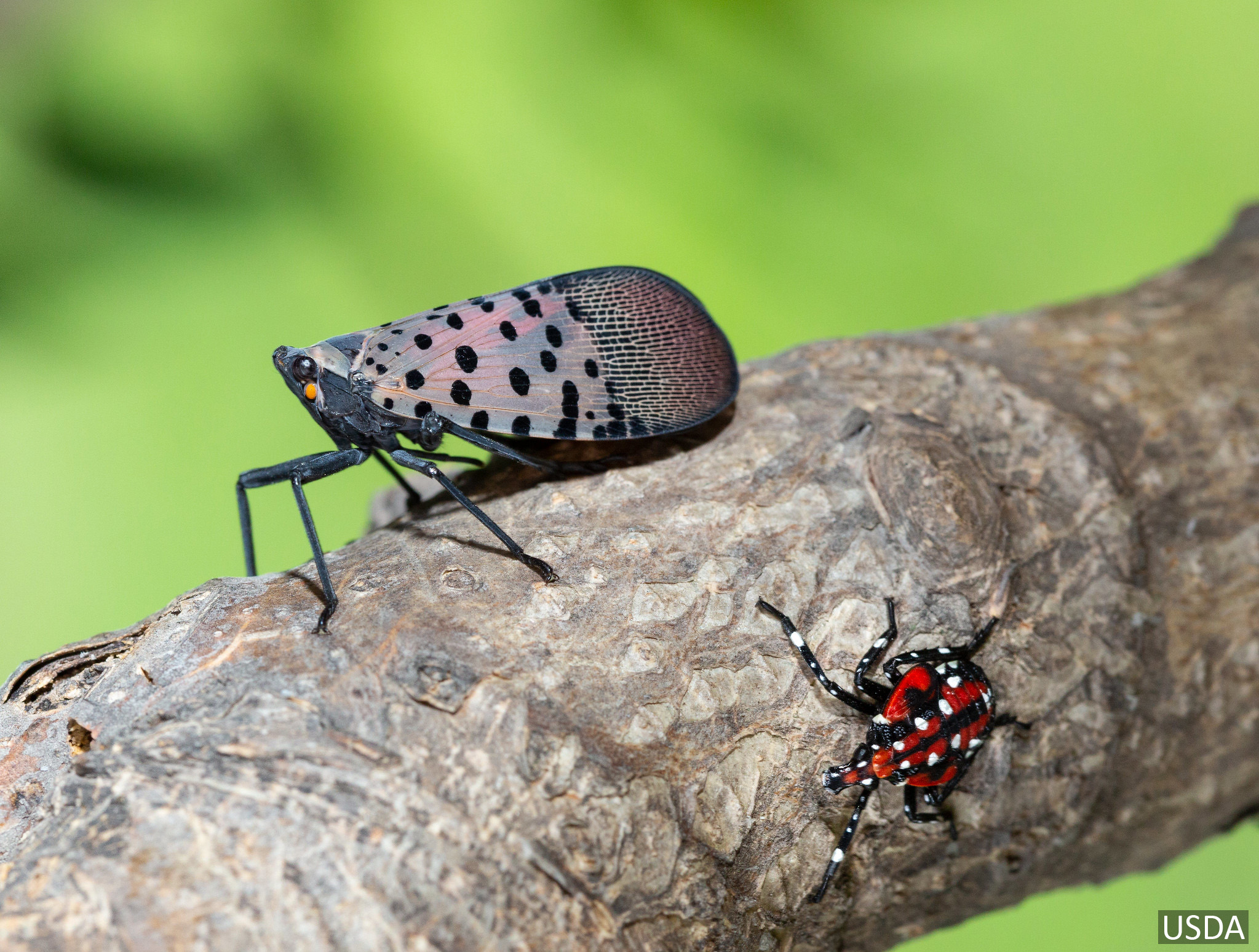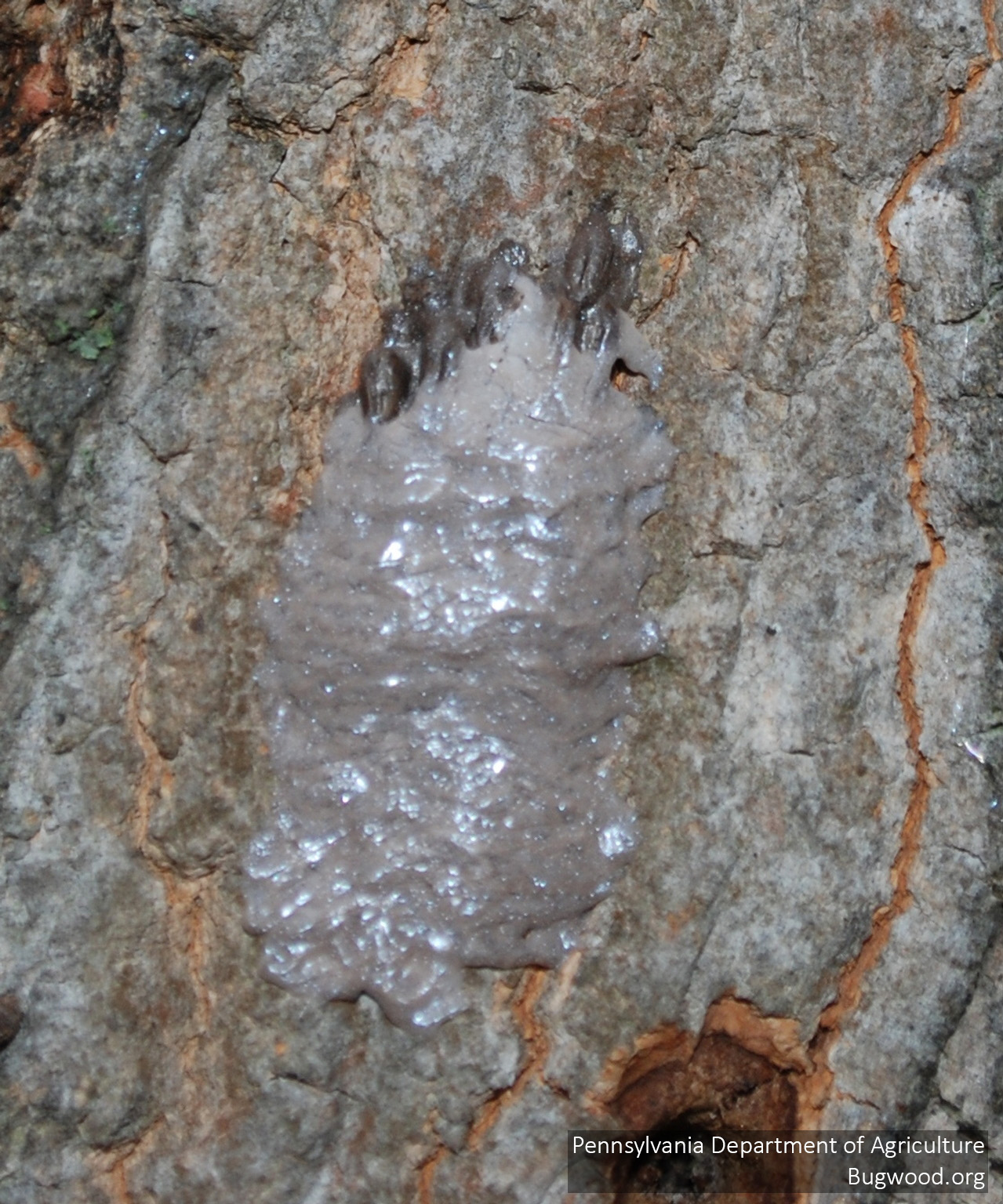Spotted lanternfly have three distinct life stages: egg mass, nymphs and adults.

Visual characteristics of spotted lanternfly:
- Early instar nymphs are about ¼ inch long and black with white spots.
- Later instars become red, still have the white spots, and are about ¾ inch long. Look for nymphs in late spring and summer.
- Adults are about 1 inch long. They have pinkish-tan wings with black spots that they keep folded over their backs. The hind wings have patches of red and black with a white band when wings are opened. Look for adults in early – mid fall.
- Egg masses are very hard to see. They are about 1 inch long, smooth, and brownish-gray. They are shiny and waxy when first laid but may crack during the winter.



Other characteristics of spotted lanternfly:
- Adults and nymphs can spread on their own by jumping and walking. Nymphs are strong jumpers and will jump when prodded or frightened. Adults can also fly short distances.
- Egg masses and adults of spotted lanternflies can easily be moved by human activity. Egg masses can be laid on almost any outdoor surface including firewood. Adults can easily hitchhike on moving vehicles.

